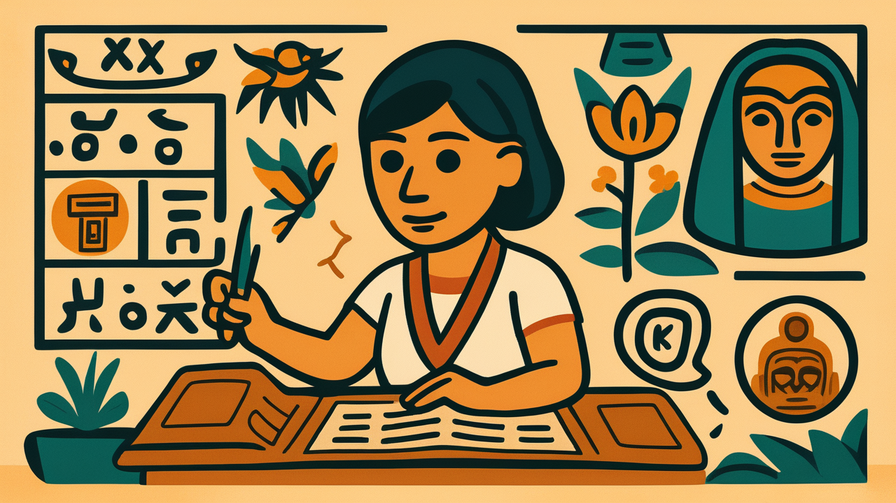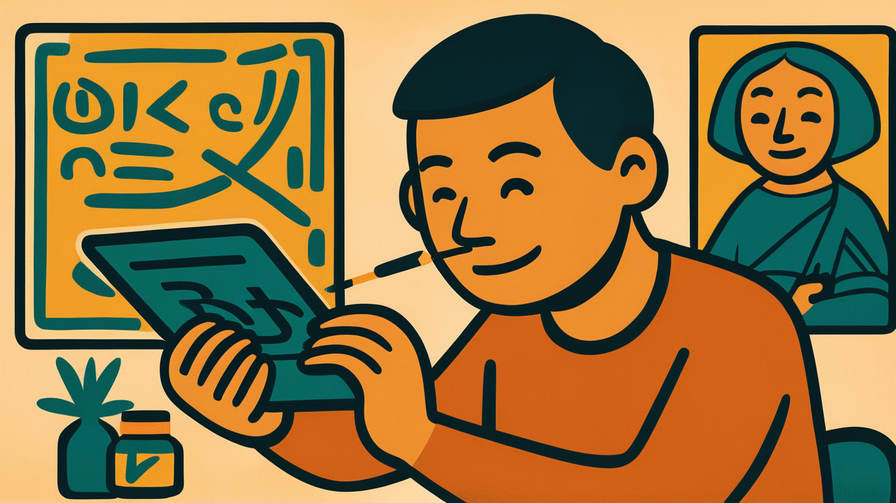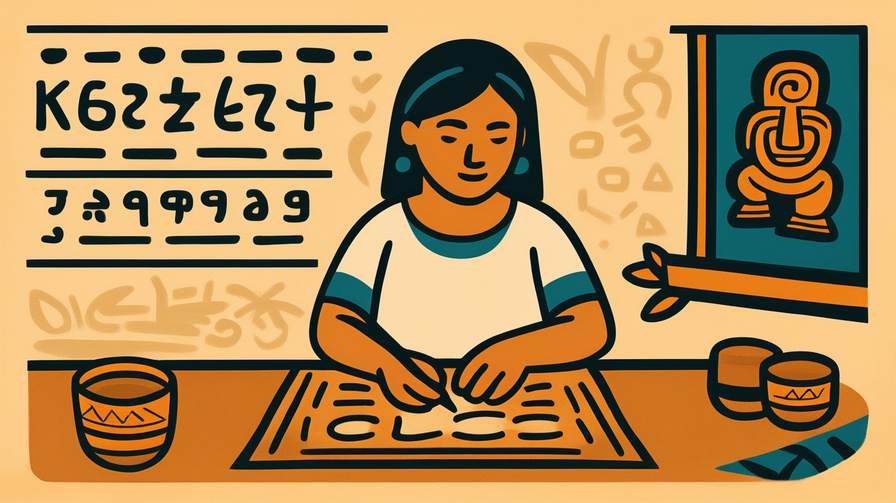[Disclaimer] This article is reconstructed based on information from external sources. Please verify the original source before referring to this content.
News Summary
The following content was published online. A translated summary is presented below. See the source for details.
In Guatemala, artist Wilmer Aram Ajú is working on an innovative project to preserve and revitalize the K’iche’ Maya language through the creation of a modern glyph system. The K’iche’ people, one of the largest indigenous groups in Guatemala with over one million speakers, have historically relied on oral traditions to pass down their language. Ajú’s project aims to develop a visual writing system that combines traditional Maya artistic elements with contemporary design principles. This initiative represents a significant step in preserving indigenous languages and cultures in Guatemala, where many Maya languages face challenges from Spanish dominance in education and media. The project involves collaboration with local communities, linguists, and educators to ensure the glyphs accurately represent K’iche’ sounds and concepts while remaining accessible to younger generations who are increasingly disconnected from their linguistic heritage.
Source: Global Voices
Our Commentary
Background and Context

The Maya civilization developed one of the most sophisticated writing systems in pre-Columbian America, using hieroglyphic scripts that combined pictures and symbols. However, during Spanish colonization in the 16th century, most Maya books were destroyed, and indigenous languages were suppressed. Today, Guatemala recognizes 22 Maya languages, but many face extinction as younger generations increasingly speak only Spanish.
The K’iche’ language has a rich literary tradition, including the famous Popol Vuh, a sacred text that tells Maya creation stories. Despite having over a million speakers, K’iche’ lacks a standardized modern writing system, which makes it harder to teach in schools and use in digital communications.
Expert Analysis
Language preservation experts emphasize that creating writing systems for oral languages is crucial for their survival in the digital age. When a language has no written form, it becomes harder to use on smartphones, computers, and social media platforms where young people spend much of their time. UNESCO classifies K’iche’ as “vulnerable,” meaning it could face serious decline without intervention.
Ajú’s approach is particularly innovative because it doesn’t just adapt the Latin alphabet (as many indigenous language projects do) but creates entirely new visual symbols rooted in Maya artistic traditions. This helps preserve not just the language but also the cultural identity and visual heritage of the K’iche’ people.
Additional Data and Fact Reinforcement
According to Guatemala’s 2018 census, approximately 7.5% of the population speaks K’iche’ as their first language. However, literacy rates in indigenous languages remain low, with most education conducted in Spanish. Recent studies show that indigenous language speakers in Guatemala earn 15% less on average than Spanish-only speakers, creating economic pressure to abandon native languages.
Similar language preservation projects have shown success in other countries. In Canada, the Inuktitut syllabic writing system helped preserve Inuit languages, while in Africa, the N’Ko script has revitalized Manding languages across several countries.
Related News
This project connects to broader movements across Latin America to preserve indigenous cultures. In Mexico, the government recently launched a program to teach Nahuatl in public schools. Peru has made Quechua an official language alongside Spanish. Digital technology is playing an increasing role, with apps and online platforms being developed to teach indigenous languages to younger generations.
Guatemala’s government has also shown increased support for Maya languages, with recent legislation requiring government services to be available in indigenous languages in areas with significant Maya populations.
Summary

Wilmer Aram Ajú’s K’iche’ glyph project represents a creative solution to language preservation that honors both tradition and modernity. By creating a visual writing system rooted in Maya art, the project could help K’iche’ speakers maintain their cultural identity while participating fully in the digital world. The success of this initiative could inspire similar efforts for other endangered languages worldwide.
Public Reaction
Local K’iche’ communities have expressed enthusiasm for the project, particularly parents who want their children to learn their ancestral language. Teachers report that visual learning methods could make K’iche’ more engaging for students accustomed to emoji and visual communication. Some linguists have raised questions about standardization and whether all K’iche’ dialect variations can be represented in a single glyph system.


